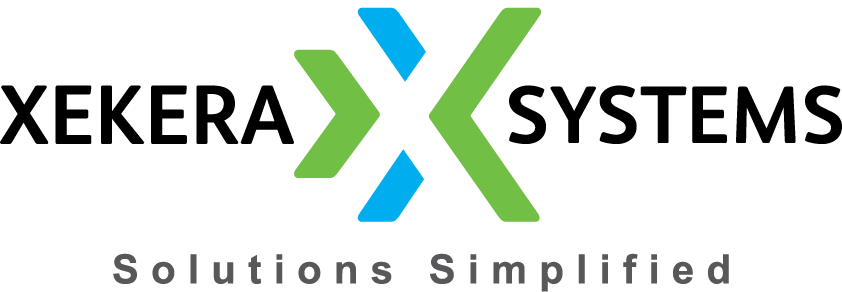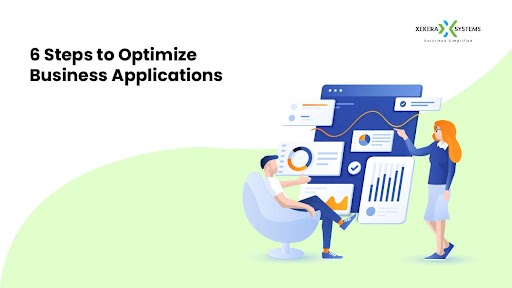The first five years after a business’s debut are when nearly half (45%) of them fail. That is alarming, right? Yes, it is, but with the appropriate direction, you can also get through these first, challenging years.
As a business owner, you are aware that the efficiency with which your team handles routine activities directly affects the success of your organisation. One strategy to improve operational efficiency if you believe your company is falling short of other companies of a comparable size and scope is to optimise business applications for targeted peak performance.

Take it all in.
You can extend and grow your firm more as a result of how well and efficiently you handle tasks.
This blog post will lead you through six measures you can take to improve the functionality of the business applications in your organisation.
Let’s take a quick look at what business applications are first:
What are applications for business?
Firm apps are software packages with a variety of features and functions used to operate a business. Solutions for business process automation help to maximise attention on operations.
Sales and customer service teams, for instance, can track leads and handle customer support inquiries using help desk software or a sales CRM, respectively.
To keep track of product quantities and project demand, employ inventory management software.
Because they are created expressly for use by employees of a company, business apps differ from computer programmes in this regard.
On the other hand, both customers and staff can use computer apps.
Business apps can range from straightforward ones that keep track of fundamental information like customer service inquiries and sales leads to more intricate ones that handle inventory and financial information.
You’ve read this post because you want to optimise the business applications you’ve already put in place, but do you realise how useful they are to your company?
A business application called CRM software can:
- Sales by 49%
- Forecast accuracy by 42%
- Productivity by 34%
Imagine the benefits your company could receive from all of these business applications taken together as this is only one example of a business application. It’s fascinating, isn’t it?
Guide to Business Application Optimization in 6 Stages
You will require some of the most dependable and optimal tools for managing internal work and people if you’re seeking for the greatest business to start in California or any other state. So let’s go get the treasure rock!
You can follow the steps in this section to optimise business apps:
1. Determine how well your business apps are performing.
It becomes sense to first assess the present situation and learn about the current status of your business applications before you attempt to optimise them.
Determine the elements that are producing bottlenecks, obstacles, and unneeded friction in your firm while evaluating your business apps.
This assists you in identifying the areas that require attention so that you can begin the optimization process.
When conducting a business application assessment, you should look into some aspects like:
1. Application Efficiency
- What percentage of users feel that the applications are efficient, inefficient?
- How does this compare to other organizations in your industry?
2. Usability of the Application
- What percentage of users find the applications easy and difficult to use?
- How does this compare to other organizations in your industry?
3. Possibility of Use
- What percentage of users find the applications feasible or not feasible to use?
- How does this compare to other organizations in your industry?
2. Create benchmarks for important metrics
Establish standards for crucial criteria such application effectiveness, usability, and viability next.
Against see how your business compares to the competition, compare your metrics to those benchmarks.
Knowing where you are now will help you determine where you want to be in the future.
Examine several KPIs within your business application and contrast them with industry standards.
The following are some instances of benchmarking metrics:
- Application Performance — how quickly does the application respond to user input?
- User Experience — what percentage of users find the application easy to use? (Use usability testing tools to test that.)
- Application Feasibility — for how many users is the application feasible to use?
3. Invest in powerful software licence management tools
Make sure you’re utilising a reliable software licencing management tool if you’re employing servers or Software-as-a-Service (SaaS) tools to run business apps. If you don’t want to be caught off guard by an audit and discover that you’re using software on servers that you don’t own or that isn’t legally licenced, you must learn how to manage software licencing.
You run the chance of receiving fines and penalties from the software provider, as well as running the risk of your business losing vital functionality.
Make sure each server has the appropriate licences while managing the software on it. You should also keep track of the software assets and inventory.
Additionally, it enables you to keep track of all of your business applications’ licences in one location, preventing you from losing track of any of them.
Simply said, strong software licence management is essential for optimising business applications.
4. For your business apps, update software and apply the most recent security upgrades.
It’s crucial to update your company programmes whenever new software upgrades are published.
By doing this, you can make sure that your company is utilising the most recent features.
Install the most recent security updates as well. Make sure to install any security upgrades that your software providers offer for your company apps.
Data from your business will be more secure and safe as a result.
5. Restart or Reconfigure Devices to Run Business Applications Effortlessly
One of the causes of performance problems is improper configuration, slow performance, or inefficient operation of the devices your business applications are running on.
Reboot or reconfigure the device, depending on the type of device you are using (such as laptops, desktops, servers, etc.).
For instance, if you use a laptop, make sure you optimise it to function effectively by turning off any unused programmes and services.
These pointless background programmes not only take up memory on your device, but they can occasionally use up your internet and drain the battery.
You can make sure that devices are set up to execute your business applications smoothly by optimising them.
6. Calculate and Review Results
Measure and assess the outcomes after putting all of the advice from the previous phases into practise.
Compare the measurements you benchmarked in step 2 to the metrics you have been tracking after putting the suggestions from stages 3-5 into practise to achieve this.
You can determine which recommendations are yielding the desired results by measuring and analysing the results.
This aids in your decision-making over which advice to accept and which to reject.
Final thoughts on How to Improve Business Applications
Congratulations—by using the 6-step process you learned about in this blog, you have optimised your business applications.
But wait, that’s not all. Create a culture of ongoing improvement for your business applications.
Encourage the members of your team to find problems and find solutions in order to create a culture of continuous development. You’ll be able to spot concerns and potential problems this way before they develop into major problems that hurt your business.
This aids in business application optimization and long-term performance improvement for your firm. To get the most reliable applications for either personal or professional usage, entrust us with the mobile app development services. Request a Proposal button must be clicked!
Frequently Asked Questions (FAQs)
Application optimization – what is it?
There are many techniques to optimise a mobile application. The improvement of is facilitated on many levels by the monitoring of application coding, application protocols, bandwidth capacity, network latency, overall network traffic, etc.
Is optimising your apps a smart idea?
Whether it is a business app or not, improving the app will only increase client and end user satisfaction. It comes with a lot of benefits, such as speeding up apps, preloading them so they are ready to run, enhancing battery life, etc.



